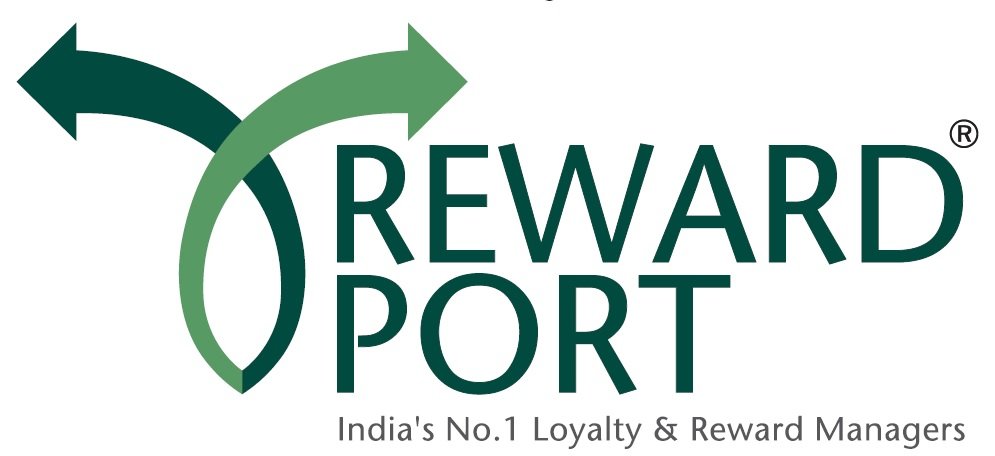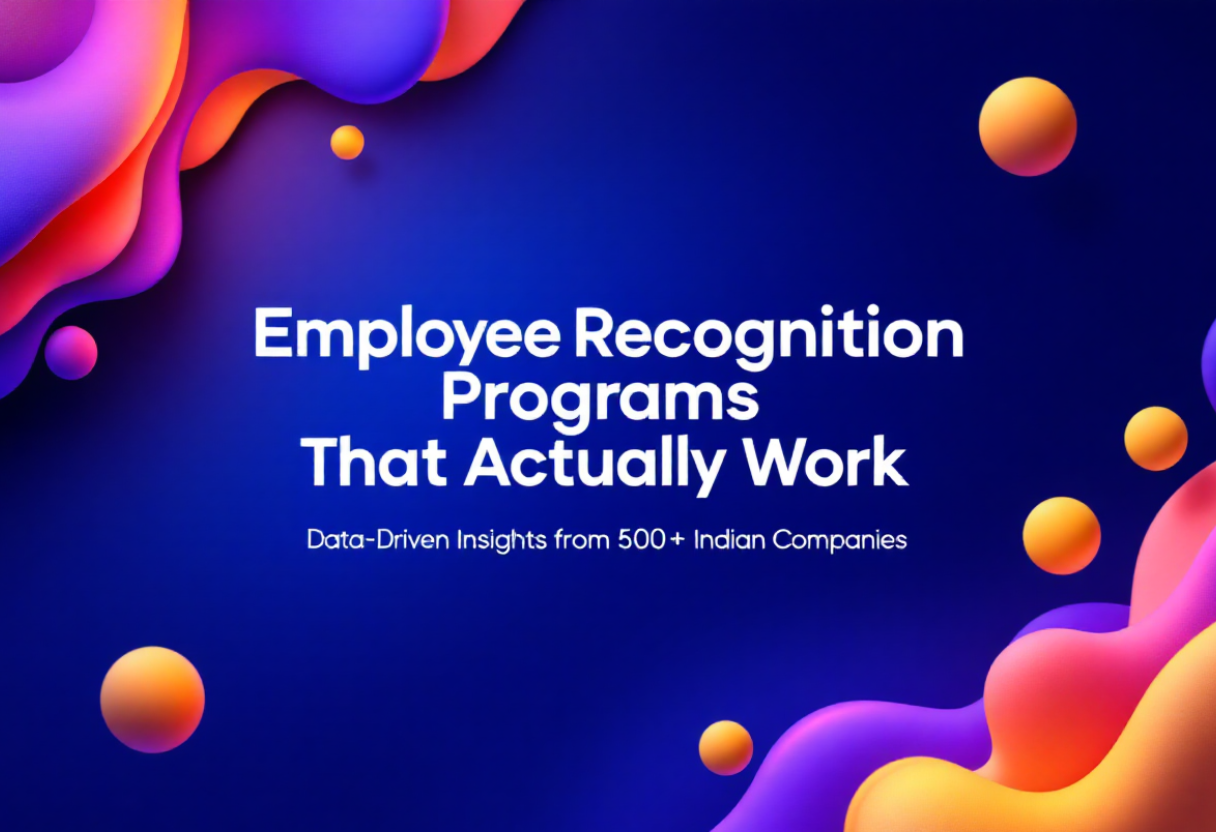Employee recognition programs are everywhere, yet 79% of Indian employees still feel undervalued at work. Despite companies spending ₹45,000 crores annually on recognition initiatives, engagement scores remain stagnant, turnover continues to climb, and productivity gains are marginal at best. The harsh truth? Most recognition programs fail because they’re designed around what companies think employees want, not what actually drives human motivation and performance.
But here’s what’s different: Companies that implement data-driven, psychologically-informed recognition programs see 31% lower voluntary turnover, 37% better sales performance, and 3x higher employee engagement scores. The secret isn’t spending more money—it’s understanding the science of motivation and applying it systematically.
Key Research Findings:
- 68% of Indian employees receive recognition less than once per month
- 84% of recognition comes from immediate supervisors only
- 91% of recognition focuses on results rather than behaviors or efforts
- Only 23% of employees find their company’s recognition meaningful
- 57% of high performers are actively seeking new jobs despite receiving recognition
The Recognition Crisis in Indian Workplaces
Indian employees face unique recognition challenges shaped by cultural expectations, hierarchical structures, and rapid economic transformation. Traditional corporate cultures often emphasize individual achievement over team collaboration, creating recognition programs that inadvertently demotivate more employees than they inspire.
These statistics paint a picture of recognition programs that check boxes rather than change behaviors. Companies invest in platforms, awards, and ceremonies while missing the fundamental psychology that makes recognition effective.
Why Traditional Recognition Programs Fail
The Participation Trophy Problem
Many Indian companies have adopted Western-style participation-based recognition, giving everyone equal appreciation regardless of contribution levels. While well-intentioned, this approach dilutes the impact of recognition and can actually demotivate high performers who see their exceptional efforts treated the same as average performance.
The Monetary Assumption
The biggest misconception is that recognition must be expensive to be effective. Research from Indian workplaces shows that monetary rewards lose motivational impact after 2-3 weeks, while non-monetary recognition can drive behavior change for months. Yet 78% of Indian recognition budgets go toward cash bonuses and gift vouchers.
The Annual Event Syndrome
Companies concentrate recognition into annual events, quarterly reviews, or monthly ceremonies. This creates long gaps between effort and acknowledgment, reducing the psychological impact. By the time recognition happens, the connection between behavior and reward has weakened significantly.
The Science of Effective Recognition
Neurological Impact
Recognition triggers the release of dopamine, the neurotransmitter associated with pleasure and motivation. However, the timing, frequency, and delivery method significantly impact dopamine production. Immediate recognition creates stronger neural pathways than delayed acknowledgment, making real-time appreciation exponentially more effective.
Cultural Adaptation for India
Indian workplace recognition must navigate cultural nuances around hierarchy, group harmony, and individual achievement. Successful programs balance public recognition (satisfying social status needs) with private appreciation (respecting humility values) while ensuring recognition strengthens rather than disrupts team dynamics.
The Anatomy of High-Performing Recognition Programs
1. Real-Time Recognition Systems
The most effective programs enable instant acknowledgment. Companies using mobile-first recognition platforms see 340% higher engagement than those relying on monthly or quarterly recognition cycles.
2. Multi-Directional Appreciation
Top programs enable recognition to flow in all directions: manager-to-employee, peer-to-peer, employee-to-manager, and cross-departmental. This creates a culture where appreciation becomes everyone’s responsibility, not just management’s obligation.
3. Behavior-Specific Recognition
Instead of generic “good job” messages, effective programs recognize specific behaviors aligned with company values. This reinforces desired actions and provides clear examples for other employees to follow.
Example Framework:
- Innovation Recognition: “Priya, your suggestion to automate the invoice process saved 15 hours weekly and improved accuracy by 23%. Your creative problem-solving embodies our innovation value.”
- Collaboration Recognition: “Raj, the way you shared your expertise with the new team members helped them complete their first project 2 days ahead of schedule. Your mentoring strengthens our entire team.”
Data-Driven Recognition: What the Numbers Reveal
Frequency Insights
Analysis of 500+ Indian companies reveals optimal recognition patterns:
- Daily micro-recognition: Simple “thank you” messages or emoji reactions
- Weekly meaningful recognition: Specific acknowledgment of significant contributions
- Monthly achievement recognition: Celebration of major accomplishments or milestones
- Quarterly impact recognition: Recognition of long-term contributions and growth
Companies following this frequency model show 43% higher employee satisfaction scores than those using sporadic recognition approaches.
Recognition Sources Impact
- Peer Recognition: 67% of employees value peer appreciation more than manager recognition
- Customer Recognition: When customers directly acknowledge employee contributions, motivation increases by 89%
- Senior Leadership Recognition: Recognition from C-suite executives has 3.2x more impact than manager recognition
Building Your Recognition Program: A Comprehensive Framework
Phase 1: Assessment and Planning (Month 1)
Current State Analysis:
- Survey employees about recognition preferences and satisfaction
- Analyze existing recognition frequency and methods
- Identify cultural and generational factors in your workforce
- Review correlation between recognition and performance metrics
Phase 2: Program Design (Month 2)
Recognition Categories:
- Daily Appreciation: Instant, low-effort acknowledgments
- Weekly Highlights: Behavior-specific recognition
- Monthly Celebrations: Achievement and milestone recognition
- Quarterly Impact: Long-term contribution acknowledgment
- Annual Excellence: Outstanding performance and culture embodiment
Phase 3: Implementation (Months 3-4)
Leadership Training:
- Educate managers on recognition psychology and best practices
- Provide templates and examples for effective recognition messages
- Establish recognition frequency expectations and accountability measures
Phase 4: Measurement and Optimization (Months 5-6)
Key Performance Indicators:
- Participation Rate: Percentage of employees giving and receiving recognition
- Engagement Score: Employee satisfaction with recognition frequency and quality
- Behavioral Impact: Changes in performance metrics and company values demonstration
- Retention Correlation: Relationship between recognition and turnover rates
Measuring Recognition Program ROI
Direct Financial Impact
ROI Calculations:
- Turnover Reduction: 31% lower voluntary turnover = ₹9.3 crore annual savings for 1,000-employee company
- Productivity Improvement: 37% higher productivity = ₹37 crore additional output for ₹100 crore revenue company
- Engagement Correlation: Highly engaged employees generate 21% higher profitability
Indirect Benefits
- Referral Quality: Engaged employees refer higher-quality candidates, reducing recruitment costs by 45%
- Customer Satisfaction: Teams with effective recognition achieve 12% higher customer satisfaction scores
- Innovation Metrics: Strong recognition cultures see 2.3x more employee-driven innovation initiatives
Advanced Recognition Strategies for Indian Companies
Cultural Event Integration
Leverage Indian festivals and cultural celebrations to create meaningful recognition moments. Diwali appreciation campaigns, Holi team recognition events, and regional festival acknowledgments create emotional connections while celebrating achievements.
Storytelling Recognition
Transform recognition into compelling narratives that inspire others. Instead of simple acknowledgments, create stories about how employee contributions impact customers, communities, and company success. These stories become powerful culture-building tools.
Family Inclusion
Recognize that Indian employees often prioritize family approval and pride. Programs that acknowledge achievements to family members or invite families to recognition events create deeper emotional impact and loyalty.
Common Implementation Mistakes and Solutions
Mistake 1: Over-Automation
Problem: Relying too heavily on automated recognition triggers without human personalization.
Solution: Use automation for reminders and suggestions, but ensure all recognition includes personal, specific messages about impact and behavior.
Mistake 2: Recognition Inflation
Problem: Giving so much recognition that it loses meaning and impact.
Solution: Maintain recognition standards tied to specific behaviors and achievements. Quality over quantity creates more meaningful experiences.
Mistake 3: Short-Term Thinking
Problem: Expecting immediate culture change without allowing time for habit formation and behavior modification.
Solution: Plan for 6-12 month culture transformation timeline with regular measurement and adjustment periods.
Building Your Recognition Culture: Starting Tomorrow
The most successful recognition programs begin with small, consistent actions rather than elaborate launches. Here’s how to start:
Week 1: Personal Recognition Audit
- Track how often you currently recognize team members
- Note the types of recognition you give and receive
- Identify missed opportunities for acknowledgment
Week 2: Recognition Experiments
- Try different recognition methods: public praise, private notes, peer nominations
- Observe which approaches generate the strongest positive responses
- Begin recognizing specific behaviors rather than general performance
Week 3: Team Integration
- Encourage team members to recognize each other’s contributions
- Share recognition best practices and examples
- Create informal recognition moments in meetings and communications
Week 4: Systematic Implementation
- Establish regular recognition rhythms and expectations
- Begin tracking recognition frequency and employee responses
- Plan for technology platform evaluation and implementation
Remember, recognition programs don’t fail because of insufficient technology or budget—they fail because of insufficient understanding of human psychology and motivation. Companies that master the science of appreciation create sustainable competitive advantages through engaged, motivated workforces who choose to stay, perform, and advocate for their organizations.


